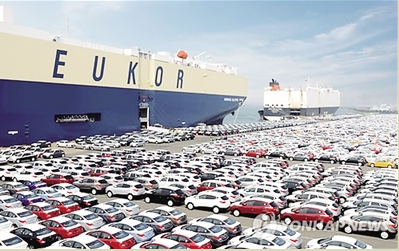
The Korean auto industry is going through a difficult period. According to the Yonhap News Agency, major automakers, component manufacturers and industry representatives from South Korea gathered in Seoul recently to discuss how to inject new vitality into the sluggish automotive industry.
The CEOs of five major automakers, Hyundai, Kia, GM Korea, Renault Samsung and Ssangyong, and their parts manufacturers and industry associations in Korea are all exploring how to deal with the tough challenges facing the automotive industry. In May of this year, GM closed its underutilized Gunsan plant, and Hyundai and Kia’s results announced this year were generally disappointing.
SMEs that produce parts for automakers are more susceptible to falling sales. According to data from the Korea Institute of Industrial Economics and Trade, more than one-third of South Korean auto parts manufacturers suffered losses in the first half of this year. Participants called on the government to expand domestic demand, provide financial assistance to tightly funded component manufacturers, and reduce regulatory standards in emerging industries such as autonomous driving and electric vehicles. The automakers said they will manage to maintain domestic car production of more than 4 million vehicles and increase it to 4.5 million by 2025.
As a major Korean automaker, Hyundai claims to invest 220 billion won (about 1.3 billion yuan) in the next two years to develop its hydrogen fuel electric vehicle NEXO series, with the goal of launching more than 30,000 vehicles in the domestic market in 2022. vehicle. GM Korea said it will help local contractors enter the international market by holding trade shows and provide 70 billion won (about 420 million yuan) in subsidies to small and medium-sized contractors. Renault Samsung said it will operate a research and development fund worth 35 billion won (about 210 million yuan) by 2020, and will form an alliance with Nissan and Mitsubishi to help its contractors bid for overseas projects. Ssangyong Motor is committed to expanding the use of manufactured parts in Korea and helping its contractors bid for Indian exports.
The Korea Ministry of Trade, Industry and Energy said it will work with the industry to overcome challenges and promote innovation in the industry. Industry Minister Song Wenmo said that if the automobile industry and the government work together, they can come up with measures to deal with the difficulties. The Commerce Department said it will announce comprehensive support programs for the auto industry next month, including financial and research support and relaxation of regulatory measures.
According to the recent statistics released by the Korea Ministry of Industry, Trade and Resources and the Customs Department (Customs), South Korea’s accumulated trade volume this year has exceeded the $1 trillion mark since last year. Specifically, the 13 major products such as semiconductors, general machinery, petrochemical products, petroleum products, and steel are still the main products that guide the increase in exports, including automobiles, but from January to October this year, the above-mentioned products were exported in the whole. The share fell from 78.2% in 2017 to 77.7%.
From the perspective of export targets, in addition to the Middle East, exports to China, ASEAN, the United States, and the European Union have increased. In particular, South Korea’s exports to the FTA partners have shown a good trend. According to the analysis of the Ministry of Industry, although the Sino-US trade war and the instability of the international financial market have led to a severe export environment, thanks to the diversification of export markets and the active exploration of high value-added export products, South Korea’s exports have maintained a good development trend. .
The corridor area is a large flow of people in the wet market and the ground is vulnerable to wear and tear, so it is particularly important to choose a suitable pvc floor mat. This hollow design of the hollow Non Slip Mats is very suitable for the corridor area of the wet market. The following is a brief introduction to the hollow Anti Slip Pvc Floor Mat. The first is its anti-slip design: the hollow anti-slip mat uses a special surface texture and material, which has excellent anti-slip performance. This design effectively prevents pedestrians from slipping in the corridor area and improves the safety of walking. Moreover, it is breathable: the hollow design of the floor mat allows air to circulate freely, helps to keep the ground dry, and reduces the growth of mold and bacteria, which is conducive to maintaining the cleanliness of the corridor area. Finally, its wear resistance, hollow non-slip mat made of wear-resistant materials, can withstand high intensity flow of people and friction, extend the service life, reduce ground wear.
Welcome to visit us.
Anti Slip Flooring Roll,PVC Mat Rolls,Anti Slip Mats Roll,Plastic Mat Roll
Jiangyin Yining E-Commerce Co., Ltd , https://www.jspvcmatyining.com